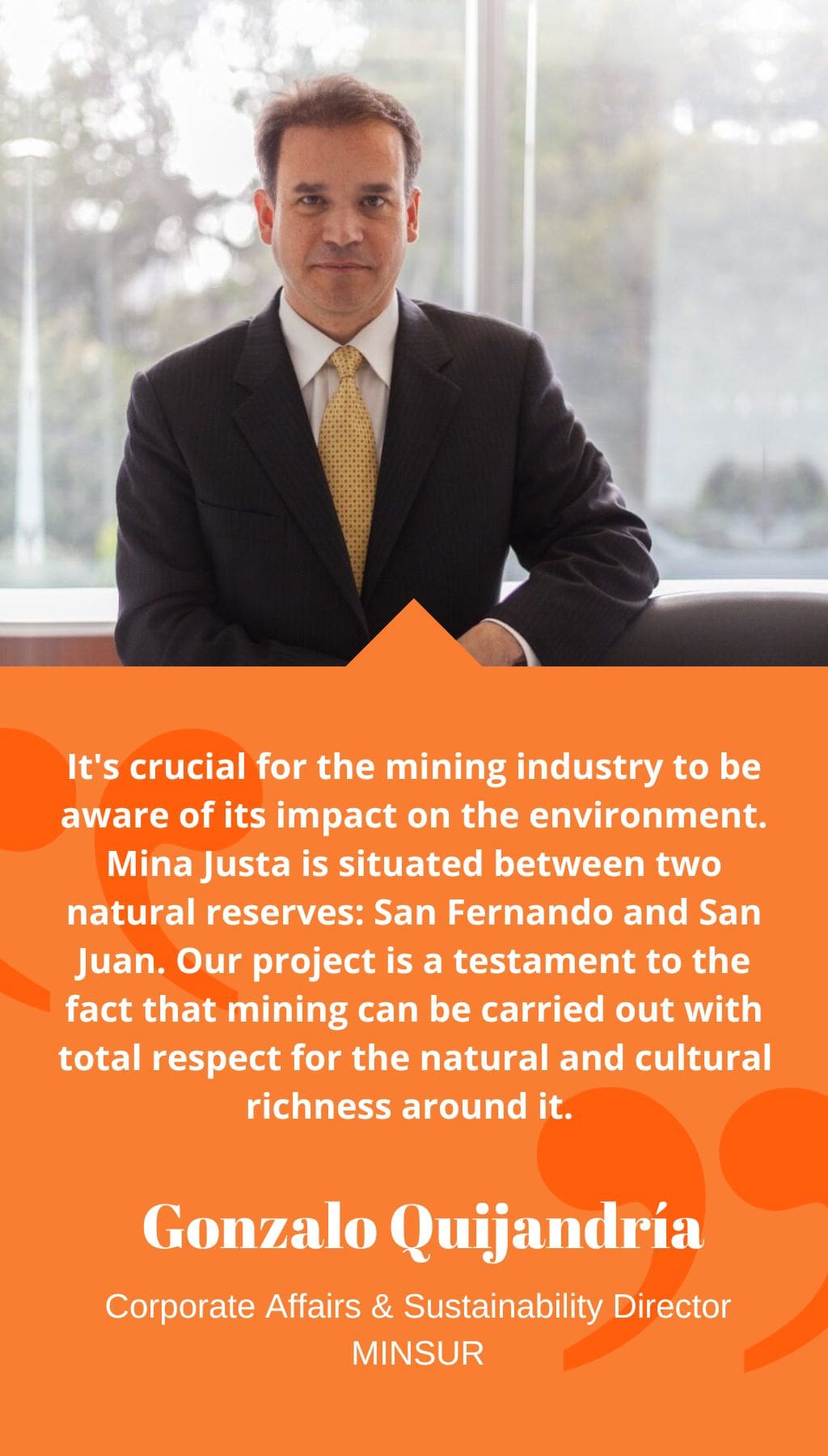
- Peru | 7 November 2021

Can you provide an update on the commercial production status at Mina Justa?
We are currently in the final stages of the commissioning phase and have already started producing concentrates and cathodes. Commercial production is scheduled to begin at the end of June 2021. Mina Justa has two plants to process oxides and sulphides. In the case of oxides, we are using a new production process called VAT leaching, which is innovative for Peru. Furthermore, we are using untreated seawater for the leaching process as we are located near the sea. For sulphides, we have a conventional sulphide concentrator plant.
How is seawater being utilized at Mina Justa?
At Mina Justa, we have an extraction point for seawater at our port and a pipeline that runs parallel to our sulfuric acid line. We only desalinate a small portion of the water for conventional camp water use. We pump water from the Pacific Ocean to our operation, which is a distance of 41 km.
Can you elaborate on your company’s initiatives to promote sustainability in the mining value chain?
As a member of the ICMM, we are continuously evaluating initiatives to reduce our carbon footprint and consumption of strategic resources like water. One of our initiatives led us to design a process that utilizes seawater. We are also exploring ways to incorporate sustainable and renewable energy sources.
How do you think mining companies in Peru can improve their public image?
It’s crucial for the mining industry to be aware of its impact on the environment. Mina Justa is situated between two natural reserves: San Fernando and San Juan. Our project is a testament to the fact that mining can be carried out with total respect for the natural and cultural richness around it. We have complete control over our environmental footprint, and there is no impact on the natural reserves. Moreover, we work together with these reserves to promote tourism in the area. We also aim to help public authorities better manage the financial resources they receive from the Mining Canon, which is 50% of the annual income tax paid. We believe that through public-private partnerships, these resources can be efficiently managed to execute public works. With the current metal prices, tax revenues will increase, so it’s essential to manage these resources efficiently.
What are the company’s investment plans for the San Rafael mine considering the strong outlook for tin?
Minsur’s San Rafael mine remains the largest single tin producer in the Western hemisphere. Our main development project there has been the B2 project for tailings reprocessing, which started production in late 2019. The tin grade we had in our tailings was higher than any other new project in the world. Along with the economics, this enabled us to implement a circular economy project. Before B2, we implemented an ore sorting technology that improved our production. Currently, we are exploring some adjacent areas to San Rafael.
What will be the financial impact of Mina Justa’s full optimization on the region of Ica and its communities?
Mina Justa has a planned production life of 16 years and is expected to contribute around $1 billion to the Peruvian economy through income tax, royalties, and an 8% profit distribution among workers. This will be a significant contribution to the region of Ica and its communities.














